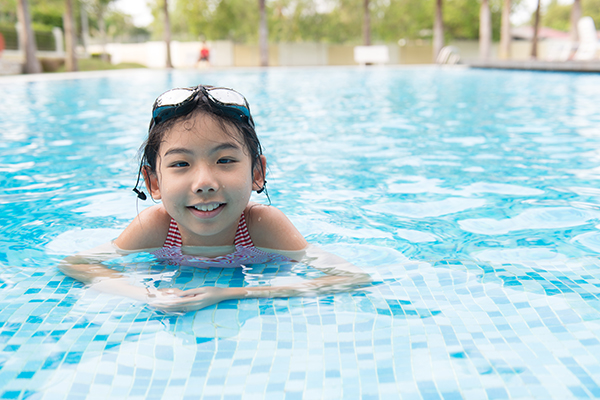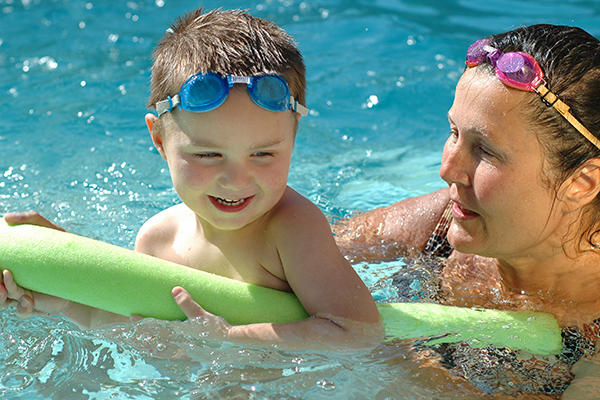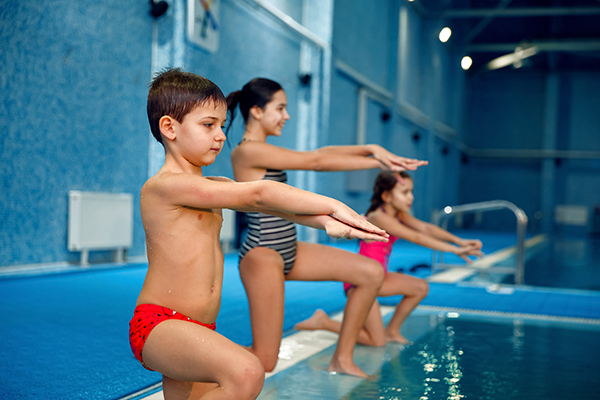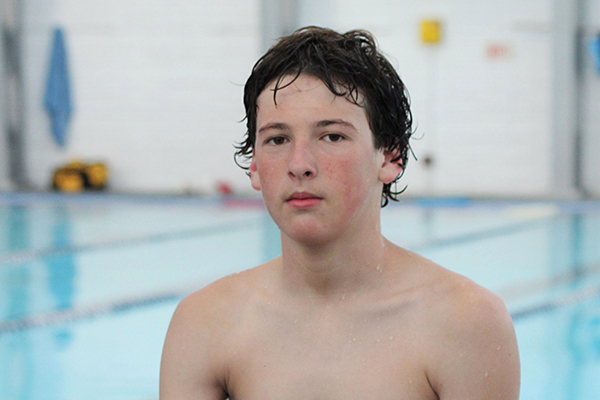
Swimming is often one of childhood’s greatest joys, but can be tricky to navigate. Reluctant swimmers, group activities and potential dangers make it essential to have a plan that keeps everyone safe in the water while having fun.
SAFETY FIRST
Safety is the foundation for successful swimming experiences.
“Never let kids swim alone,” says Mike Morrill, owner of Floaties Swim School. “Even if they’ve had lessons, it’s always best to have a swim buddy.” Additional safety guidelines include:
- Designate a person to watch the water and keep a close eye on the kids. “Close eye” meaning undistracted and in close proximity to swimmers. Ideally, this person would be a lifeguard, but that may not always be possible.
- Know the swimming abilities of everyone in the water.
- Take CPR training.
- Keep a phone nearby to call 911 quickly, if needed.
- Use approved safety devices appropriate for the chosen activity, whether it be swim vest, safety floatation device or life jacket. Ensure adults wear life jackets when needed; setting a good example for kids is also important.
- “Always swim in lifeguard zones at the beach,” says Morrill.
LEARN THE BASICS
Kids as young as infants can become comfortable in the water with proper lessons. Toddlers will learn how to be in and around water safely and start to learn to swim. Certified instructors guide children in age-appropriate activities and teach fundamentals, including floating and treading water—important life preservation skills in case of emergency. Any age is a good age for kids to take their first swim lesson, but the earlier they start, the more time kids have to grow into strong, confident swimmers.
Note for adults: It is never too late to learn swimming skills. If you don’t know how to swim or cannot swim well, seek lessons from an instructor who works with adults.
ADDRESS ISSUES
Swimming and water play aren’t fun for everyone. Sometimes kids are reluctant to be near water or have fears based on previous experiences. Other times, parents are uncertain, so pools and beaches are avoided altogether to keep everyone “safe.” The best (and safest) solution is to address issues honestly and with patience.
- Reluctant swimmers. Take a calm, non-pressured approach to water exposure and learning. Find an instructor who has experience with reluctant swimmers. Pushing kids into water so they “get over it” is never a good solution; neither is avoiding water altogether. Exposing kids in a safe, encouraging way is advised.
- Refusal to swim. If your child refuses to try learning basic water skills, it can be tempting to give in, thinking it’s not essential. Be firm in your resolve to walk through it with your child. A general level of comfort and ability in the water could be lifesaving later on.
- Fear of water. If your child experiences or sees a scary water event, it may be hard to try swimming again. Give your child space to talk about the issue. Consider talking to your pediatrician or a counselor to help process the event and how to move forward.
Whether you are at a pool, lake or beach, swimming is meant to be fun. These tips will help ensure your family looks forward to water play throughout the year.
Rebecca Hastings is a freelance writer.
____________


















